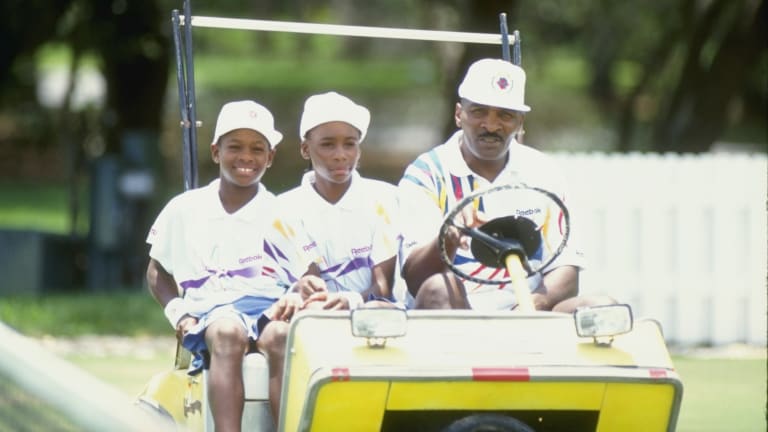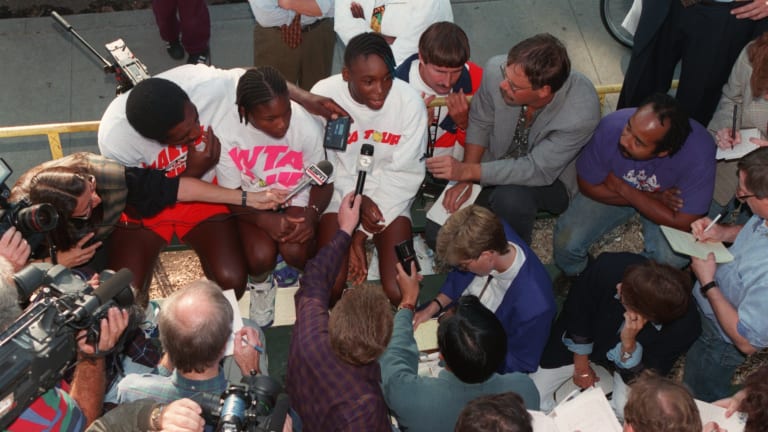Tennis Honors: Serena Williams
What more is there to say about the now-retired Serena Williams? Plenty.
By Sep 03, 2022Tennis Honors: Serena Williams
Gallery of Greatness: What Brady, Gretzky, Jordan, Joyner-Kersee, Vergeer and Serena have in common
By Nov 25, 2022Tennis Honors: Serena Williams
How soon could Serena Williams make a comeback?
By Oct 25, 2022Tennis Honors: Serena Williams
The Matches that Made Serena the GOAT: Williams d. Venus Williams, 2017 Australian Open final
By Oct 18, 2022Tennis Honors: Serena Williams
The Matches that Made Serena the GOAT: Williams d. Maria Sharapova, 2012 Olympic gold medal match
By Oct 18, 2022Tennis Honors: Serena Williams
The Matches that Made Serena the GOAT: Williams d. Justine Henin, 2010 Australian Open final
By Oct 15, 2022Tennis Honors: Serena Williams
The Matches that Made Serena the GOAT: Williams d. Martina Hingis, 1999 US Open final
By Oct 13, 2022Tennis Honors: Serena Williams
The Matches that Made Serena the GOAT: Williams d. Steffi Graf, 1999 Indian Wells final
By Oct 13, 2022Tennis Honors: Serena Williams
WATCH: Serena Williams teases “Tom Brady”-style comeback on Good Morning America
By Sep 14, 2022Tennis Honors: Serena Williams
Margaret Court and Serena Williams: A Comparative Discussion
By Sep 13, 2022What more is there to say about the now-retired Serena Williams? Plenty.
Journalists who have covered the tennis icon for decades recall their SW memories, and what they'll miss most.
Published Sep 03, 2022
Advertising
Advertising

Richard Williams, with daughters Serena and Venus, in 1992.
© Getty Images
Advertising
Advertising

Serena's first "Serena Slam" wouldn't have been possible without some late-match magic against Kim Clijsters in Melbourne.
© Getty Images
Advertising
Advertising

All eyes were on Venus in Oakland, but Richard Williams soon put me straight.
© Getty Images